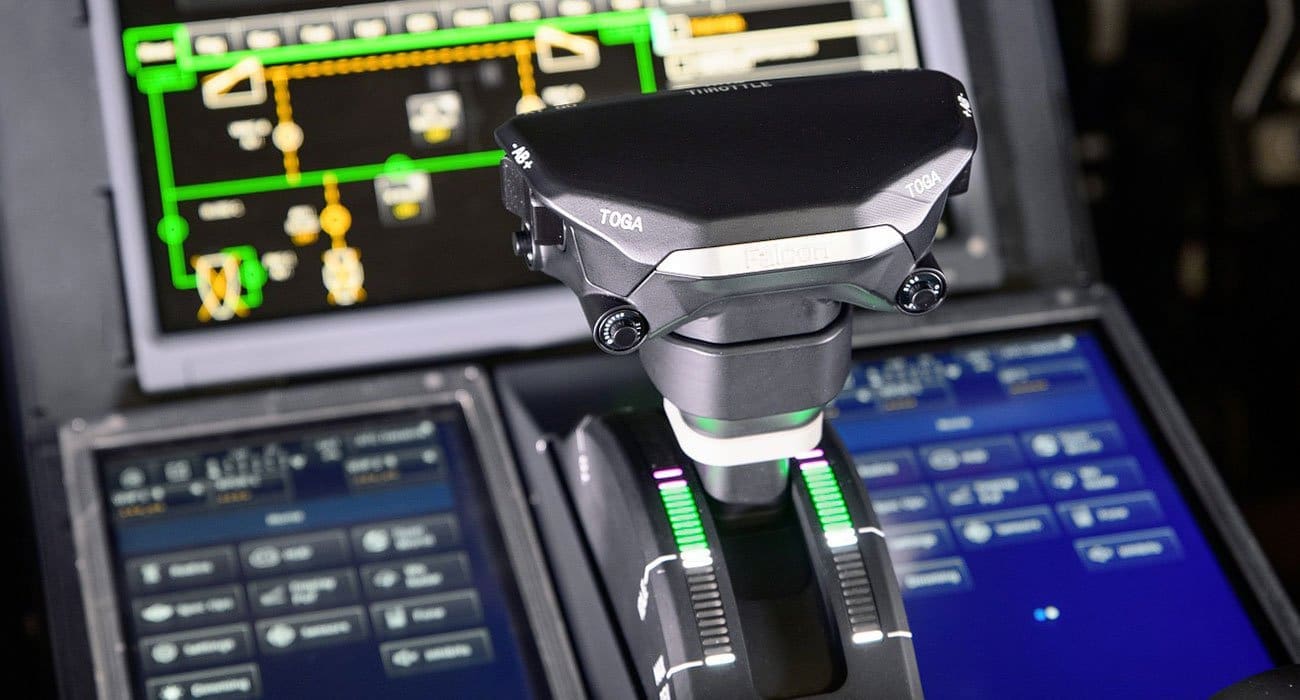NeXus, Dassault Aviation’s flight deck for the Falcon 10X private jet, has won the coveted Good Design® Award from a jury assembled by two organisations: the Chicago Athenaeum Museum of Architecture and Design; and the European Centre for Architecture Art Design and Urban Studies.
The NeXus flight deck won in the Transportation category.
The award was founded in 1950 by legendary architect Eero Saarinen (known in aviation for his futuristic TWA terminal at JFK) and by industrial designers Charles and Ray Eames.
The Chicago Athenaeum describes the award as the “oldest and world’s most recognised programme for design excellence worldwide.” It recognises “quality design of the highest form, function, and aesthetics — a standard beyond ordinary consumer products.”
The Falcon 10X is an all-new business jet design with planned entry in service in 2027. Its NeXus flight deck is the next step in avionics and flight control systems, introducing breakthrough safety technology drawn from Dassault’s latest fighter designs.
NeXus is a visual and tactile environment conducive to safe and precise flying. Functionally, it reduces pilot workload by, among other things, simplifying many button-pushing and data entry tasks and automating others. Pilots therefore focus on the ‘big picture’ of flight management.
The design team sought to combine new technology with comfort factors for ultra-long range flight and a design sensibility that raises flight deck aesthetics to the same level as passenger cabin design.
Falcon 10X Gallery
NeXus smart systems
The Falcon 10X will be capable of 15-hour-plus flights. By providing a comfortable, fatigue-reducing flight deck environment, pilots are able to perform better throughout the mission.
Dassault’s Carlos Brana, EVP of Civil Aircraft, said, “The whole idea behind NeXus is to create a flight deck environment that keeps pilots sharp in all flight conditions. In the process it makes the Falcon 10X a joy to fly and sets a new safety standard for civil aviation.”
The NeXus system’s new Smart Throttle (a first in civil aviation) is probably the best example of a design simplification that reduces workload and enhances safety.
The Smart Throttle concept (one lever controlling both engines) comes directly from the twin-engine Rafale fighter. As in the fighter, the NeXus Smart Throttle automates many engine management tasks, allowing pilots to stay focused on higher level flight activities.

The Smart Throttle automatically manages power for reduced-thrust takeoffs, following noise abatement procedures and ensuring proper climb gradients. It automatically manages an engine-out situation and is integrated with the aircraft’s fly-by-wire system, enabling new safety capabilities for the industry.
Most significant is an Automatic Recovery Mode (for use in in a wake turbulence encounter, for example) when autopilot and Smart Throttle work in concert to return the aircraft to a safe attitude at a safe airspeed.
Another way NeXus helps pilot is dual Head-Up Display system that can be used as primary means of pilot operation, another first in civil aviation. When using the HUD, pilots see not only their flight guidance cues, but also the outside environment. This is true on clear sunny days and in pitch black conditions, thanks to Dassault’s unique FalconEye sensor package and global terrain database.















